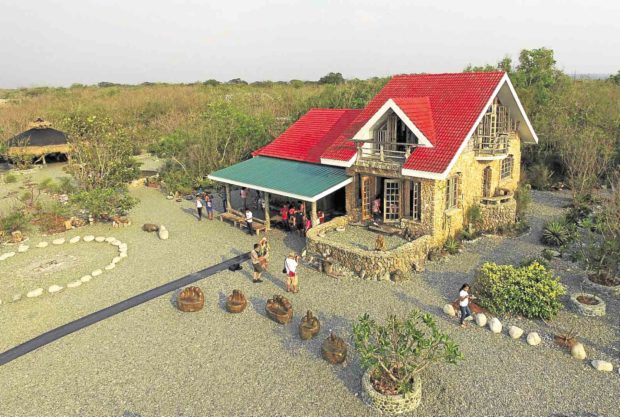
The “Bahay na Bato” in the village of Nalvo Norte is a must-see destination in Luna. —CONTRIBUTED PHOTO
LUNA, LA UNION—This coastal town known for its stone and pebble beaches boasts of a stone house that has become one of its most famous attractions.
Stepping through the “Bahay na Bato,” owned by Baguio-based doctors, Edison and Purita Chan-Noble, would be no different from walking on the pebble beach.
The floors of the bedrooms and hallway are covered with stones, which Mother Nature lavishly bestowed on this scenic town.
“Stones are the most abundant material in the town, so the owners used these for the house,” said Beverly Kim, who manages the house.
Wood from demolished old houses was recast into staircases and beams. The house is decorated with coral and limestones.
The Noble family built the house in 2000, intending it to be their hideaway.
Residents referred to it as the Noble House, which is nestled in a 3-hectare property that overlooks the sea. It has pockets of forests.
But in 2015, town officials asked the family to open the house to visitors. Hundreds of tourists come daily for the rare experience of exploring its stone art and architecture, courtesy of Beverly’s husband, Korean sculptor Bong Kim, who redesigned the house.
Korean sculptor Bong Kim, who built the “Bahay na Bato” in the coastal town of Luna in La Union province, starts shaping a boulder into a piece of art.
The yard is filled with sculptures depicting creatures of the sea such as turtles and other unique art pieces. Even the garden set was carved out of massive rocks and its bonfire corner is surrounded with stones that serve as seats for campers.
While none of the displayed sculptures are for sale, customers can place orders for designs and pieces they fancy, Kim said. Fish and sea turtle sculptures have become best sellers.
The gallery serves as a showroom for vases and plant pots decorated with stones by residents who were trained by Kim. “It is our way of helping them,” he said.
The Bahay na Bato maintains two galleries. One houses the interactive arts and displays paintings by local artists. The second gallery is an artifacts museum, divided into rooms which display old tools used for farming, fishing and carpentry.
There are also displays of war implements and kitchen utensils. “Most of the young generation no longer know these tools used by their forefathers,” Beverly said.
An interesting detail about the museum is the floor, a mosaic of pebbles designed by Alvin Noble, 46, a cousin of the owners. Noble also makes wooden sculptures.
“What we want to show is that stones have many uses,” Kim said. “They are not only to be stepped on in the beaches or used for construction. They can also become works of art.”
Photo below shows one of Kim’s creations, a headless woman, backdropped by a wall adorned by images of fish created from stone. —PHOTOS BY EV ESPIRITU